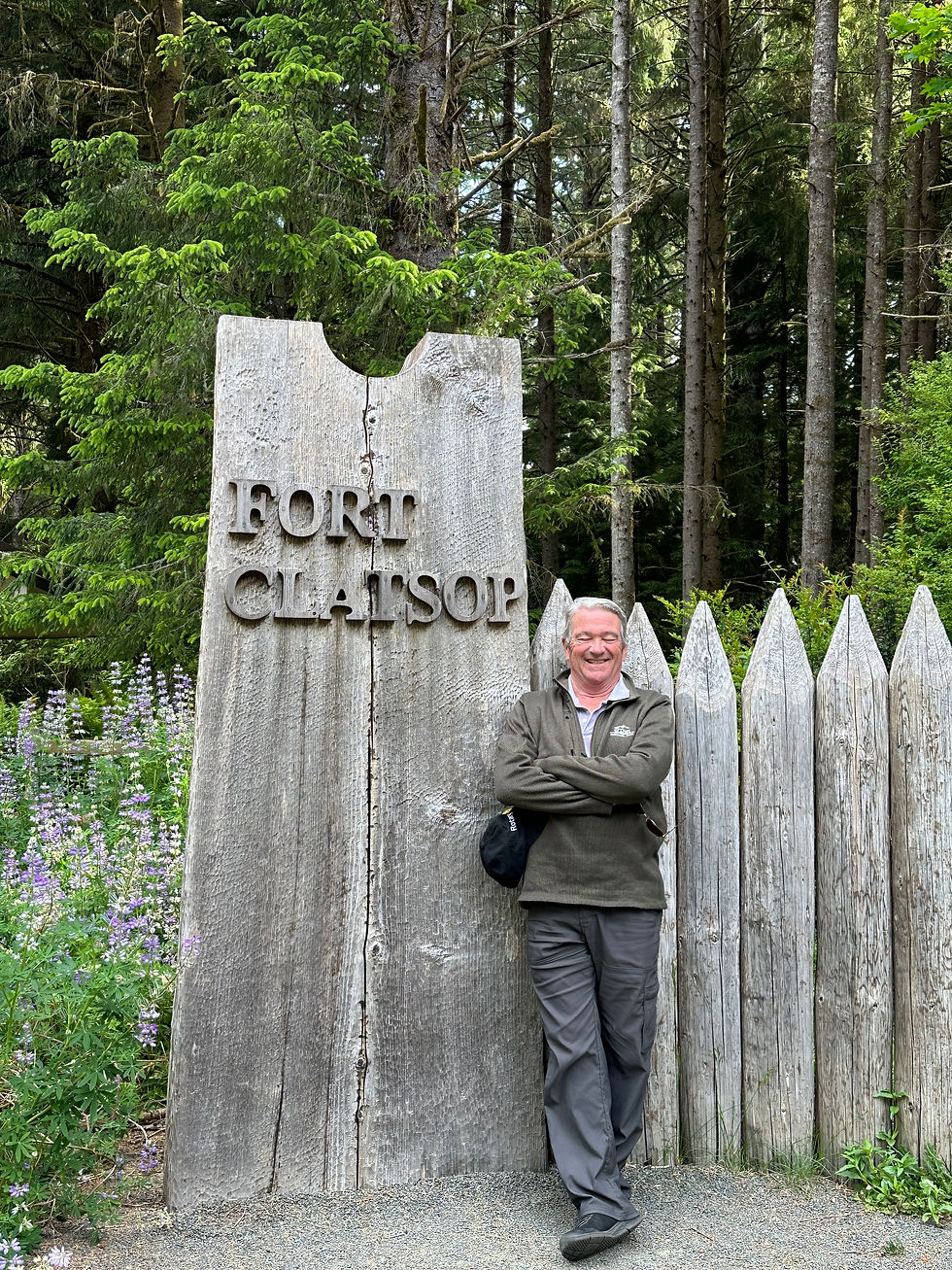Standing In The Shadows of Heroes
- Betsy Rich
- Jun 6
- 3 min read
Updated: Jun 12
Friday June 6th Astoria, OR

My husband Jamie is an American history buff and retired 5th grade teacher. His favorite lessons to teach were westward expansion, the Oregon Trail and and Lewis & Clark’s Corps of Discovery Expedition. My promise to someday visit historical sites related to the Oregon Trail and Lewis & Clark helped me convince Jamie to buy our first camper. I don’t know a lot of American history but I know someone who does…Ken Burns. So before planning our trip to the PNW, I watched his Lewis & Clark documentary subtitled “America’s greatest story of adventure.”
What a story it is! It has all the elements of a best-selling adventure novel combined with a blockbuster movie. It features a terrific cast of characters. President Thomas Jefferson, who was fascinated by the lands west of the Mississippi that had not been explored by white Europeans. So he commissioned an expedition led by his secretary, Meriwether Lewis who chose William Clark, his friend and former commanding officer to share the Expedition’s responsibilities. They were accompanied by 31 enlisted Army men and Clark’s African American slave,York. Five months into the journey, French Canadian fur trader and translator Toussaint Charbonneau, his young Shoshone wife Sacagawea and their infant son joined the group. Their mission, which began in 1804, was to explore the newly acquired Louisiana Territory, make scientific and geographical observations and find a water passage to the Pacific Ocean. The Corps traveled four thousand miles in two an a half years from outside of St Louis to the Pacific Coast and back to St. Louis again. Only 1 member of the expedition died, which is extraordinary considering they traveled by canoes, crossed mountain ranges including the Rockies, using only their wits, what they could carry and resources they could trade for with the Native Peoples they met. Thanks to Ken Burns, I also became hooked on Lewis & Clark and couldn’t wait to stand in the footsteps of heroes; to walk where they actually walked.

On Monday, we pulled into Fort Stevens, part of the Lewis and Clark National & State Historical Parks. We had a lovely campsite in an area where the expedition must have been more than 220 years ago. We got up early on Tuesday morning to go to the place we most looked forward to visiting, Fort Clatsop, just 7 miles from where Rhoda was parked.
The original Fort Clatsop, built by the Expedition, no longer exists, but a replica was built on its exact site. Fort Clatsop is important to the Lewis & Clark story because it was their home for the long and rainy winter of 1805-6. The men passed the time making salt by boiling water from the Pacific 24 hours a day, hunting elk for food and making clothing and moccasins from elk skin. Lewis spent his time documenting the journey; taking notes on the wildlife, terrain and native peoples they encountered. He also made maps of the area, which would be very helpful to future settlers of the Pacific Northwest. After the miserable winter spent at Fort Clatsop, the men were desperate to return east. They departed on March 22,1806 and everyone arrived safely back in St.Louis six months later, a truly remarkable feat.


We spent hours at Clatsop. The Visitor Center was terrific with excellent films and exhibits. Marj and I went for a hike while Jamie dug into the newest Lewis & Clark book he bought in the shop. In the afternoon, we visited the wreck of the Peter Iredale, a four-masted steel barque en route to the Columbia River that ran aground on October 25,1906 at the beach near our campsite. I’d never seen an actual shipwreck. Even though there wasn’t much left, it was still an impressive site.

As we were leaving Astoria, crowds were descending to celebrate the 40th anniversary of Goonies, which was filmed in Astoria. We got out just in time and headed to Pacific Beach, WA…on the Rhoda




1 Comment